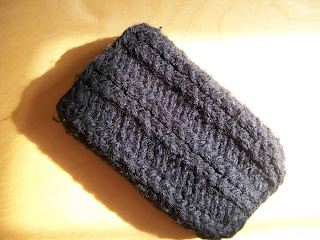 | |||
| Ignore our non-matching chairs in the background (the weather hasn't been good enough for me to paint the last one!!) |
To make the knitted Christmas tree:
- CO 20 stitches
- K20
- K1, P18, K1
- K20
- K1, P18, K1
- K2tog, K16, K2tog
- K1, P16, K1
- K18
- K1, P16, K1
- K18
- P2tog, P14, P2tog
- K16
- K1, P14, K1
- K16
- K1, P14, K1
- K2tog, K12, K2tog
- K1, P13, K1
- K14
- K1, P13, K1
- K14
- P2tog, P10, P2tog
- K12
- K1, P10, K1
- K12
- K1, P10, K1
- K2tog, K8, K2tog
- K1, P8, K1
- K10
- K1, P8, K1
- K10
- P2tog, P6, P2tog
- K8
- K1, P6, K1
- K8
- K1, P6, K1
- K2tog, K4, K2tog
- K1, P4, K1
- K6
- K1, P4, K1
- K6
- P2tog, P2, P2tog
- K4
- P2tog, P2tog
- K2tog
- Cut the yarn tail, pass it through the last stitch and pull tightly to secure.

Putting the card together:
I guess you could get creative with the decorations, but I wanted to keep mine simple and elegant. I glued a few red and gold sequins into the trees and left it at that.
 |
| Go crazy with the decorations - just like on your real Christmas tree! |
To attach the tree to a card, thread very thin ribbon in a small loop at the top, and another at the bottom of the tree. Punch holes in the card in the corresponding place, pass the ribbon through the holes and tie in two neat bows. I want it to be obvious that these cards are handmade, and special. If you wanted to be more subtle though, you could glue the trees to the card.
 |
| I attached the trees to each card using thin ribbon, tied in bows. |
I can't wait to send these off in the post to friends and family (although I might keep one to show it off!)



















